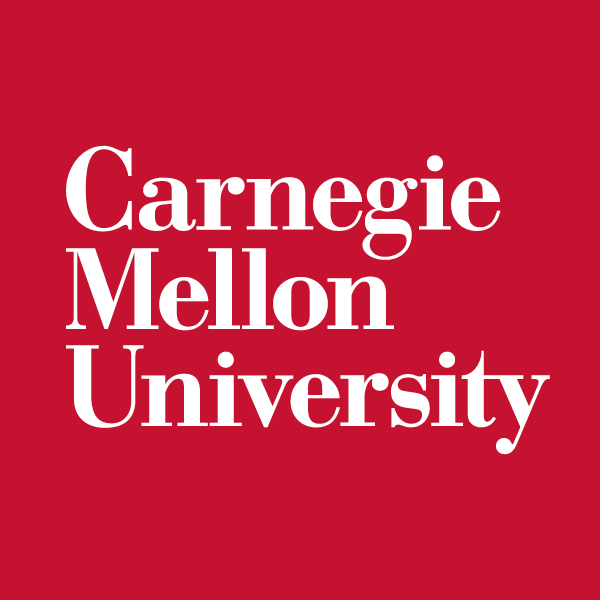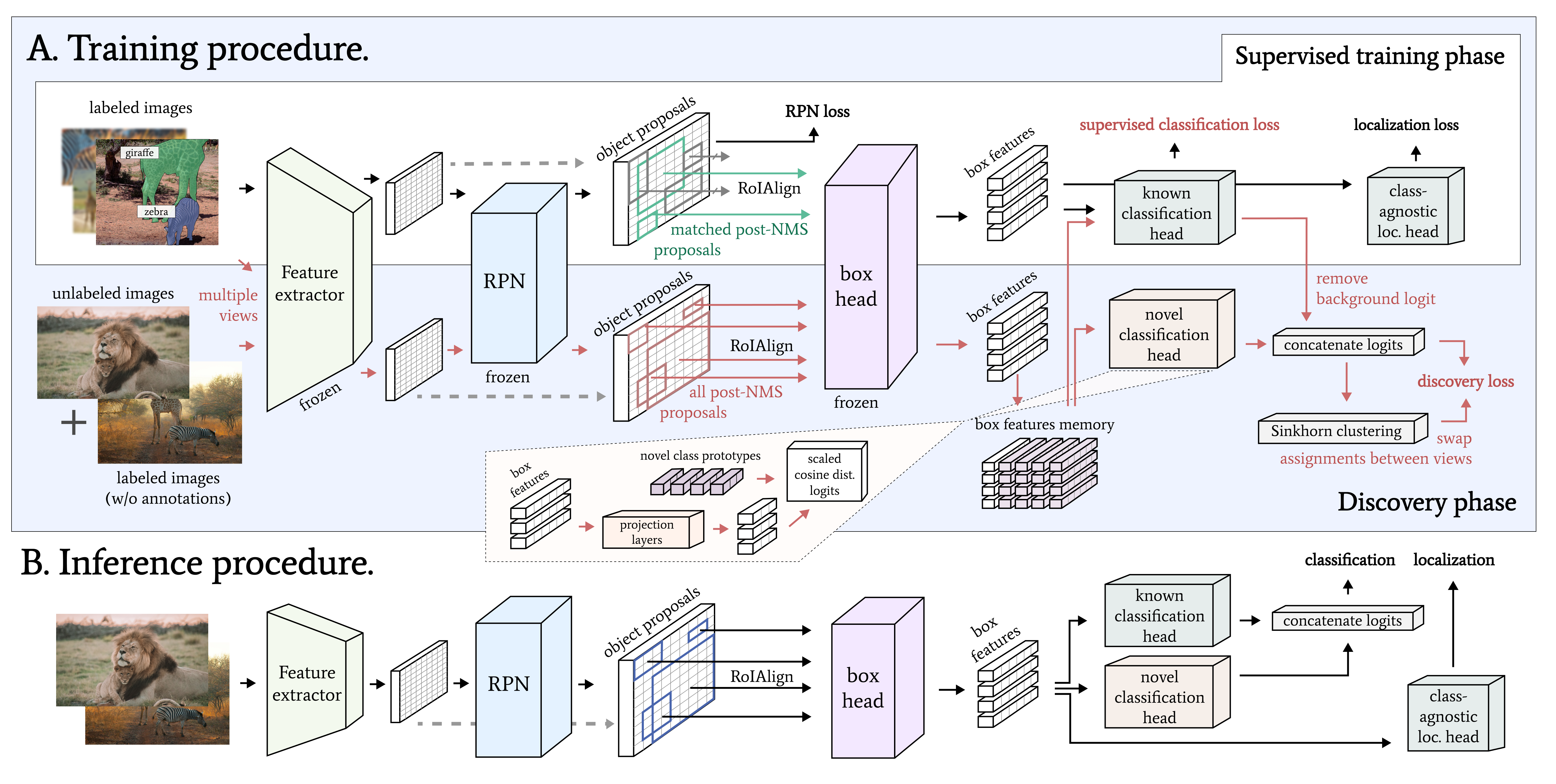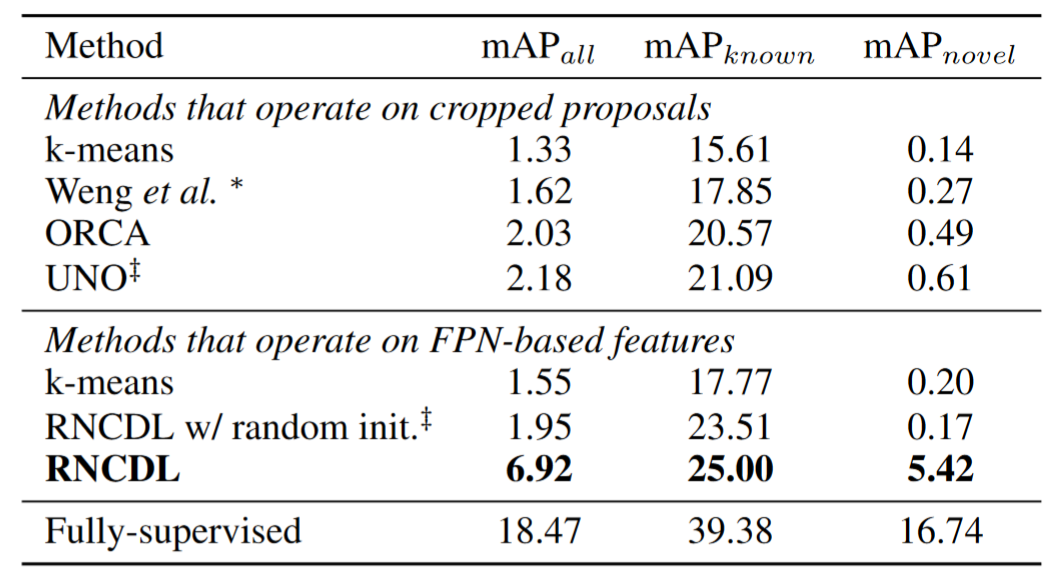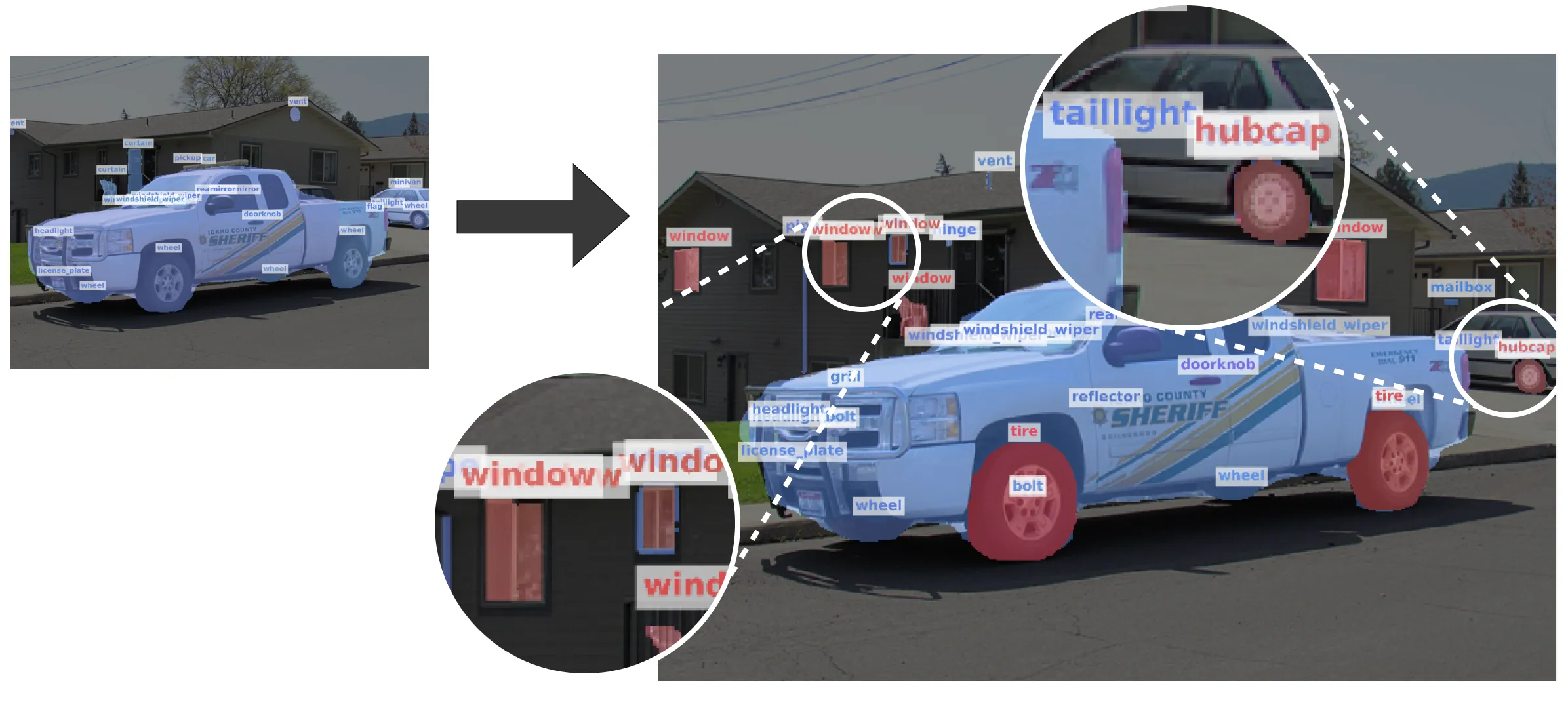We tackle the problem of novel class discovery, detection, and localization (NCDL)
. In this setting, we assume a source dataset with labels for objects of commonly observed classes. Instances of other classes need to be discovered, classified, and localized automatically based on visual similarity, without human supervision. To this end, we propose a two-stage object detection network Region-based NCDL (RNCDL)
, that uses a region proposal network to localize object candidates and is trained to classify each candidate, either as one of the known classes, seen in the source dataset, or one of the extended set of novel classes, with a long-tail distribution constraint on the class assignments, reflecting the natural frequency of classes in the real world. By training our detection network with this objective in an end-to-end manner, it learns to classify all region proposals for a large variety of classes, including those that are not part of the labeled object class vocabulary.
Our experiments conducted using
COCO
and
LVIS
datasets reveal that our method is significantly more effective compared to multi-stage pipelines that rely on traditional clustering algorithms or use pre-extracted crops. Furthermore, we demonstrate the generality of our approach by applying our method to a large-scale
Visual Genome
dataset, where our network successfully learns to detect various semantic classes without explicit supervision.







